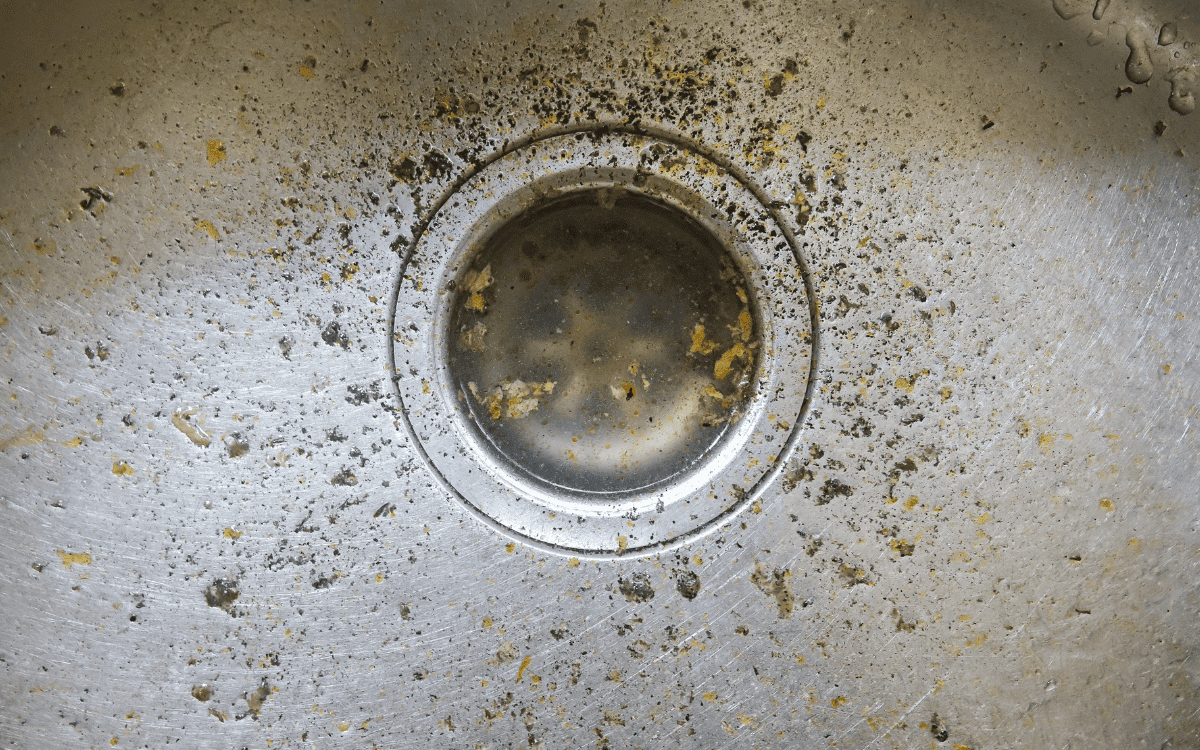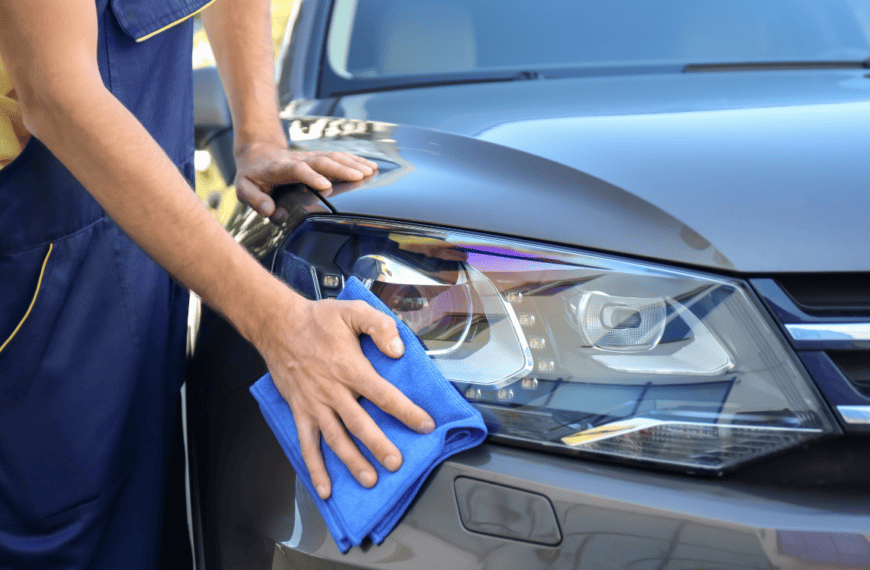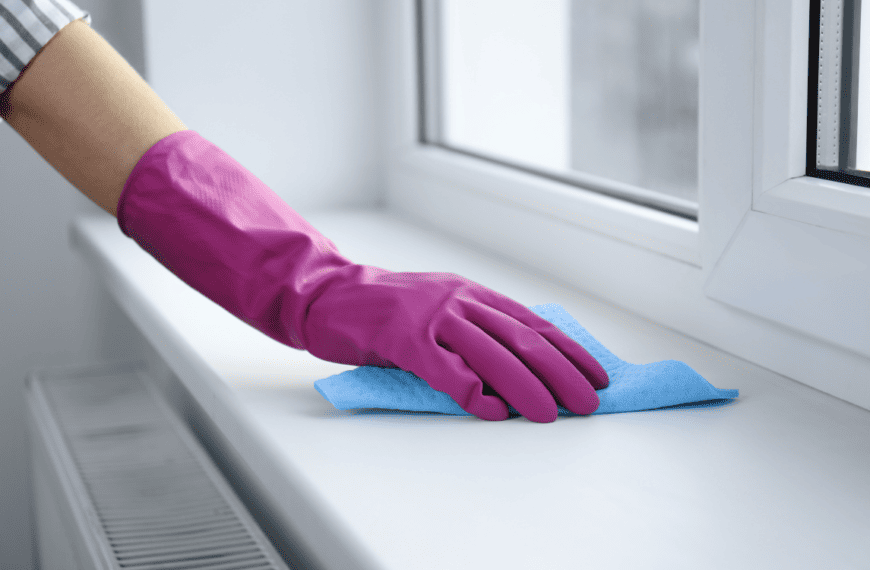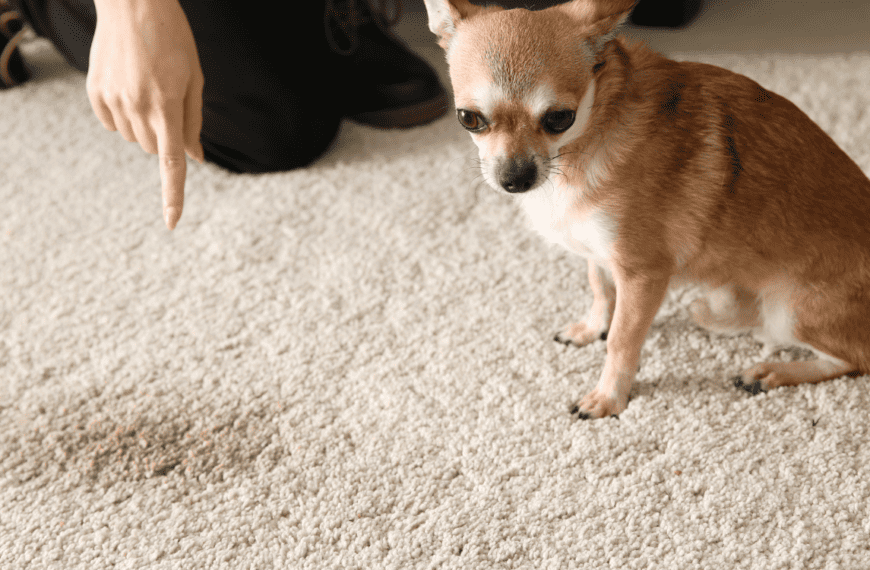I purchase baking soda nearly every time I head to the grocery store. Why? It can be used for so many things, and one of those is cleaning drains. Not only do I do this with my sink drains, but also the shower drain. Let me show you how to clean drains with baking soda and vinegar and give you my best tips to make sure it works the first time.
Before You Begin: Important Tips
The process of cleaning drains with baking soda and vinegar is really simple. In fact, I make it part of my weekly cleaning, but you certainly can do it monthly. Before you start, here are a few important tips:
- Use the right ratios: Measure properly when using baking soda and vinegar; too much vinegar will lead to fizzing
- Cover drain for effectiveness: If you can cover the drain after pouring the solution down (even with a cleaning cloth), it can help the process be more effective
- Remove hair and gunk first: Don’t try to use baking soda and vinegar to clean or remove large chunks of hair or gunk in the sink; you have to remove those first to let the drain cleaner work
Supplies and Tools
If you asked what is the best homemade drain cleaner, I would easily tell you baking soda and vinegar. However, they can’t quite do their job without boiling water. Here are the supplies and tools you will need to clean the drain with baking soda and vinegar:
- White distilled vinegar
- Baking soda (sodium bicarbonate)
- Boiling water
- Kitchen rag or drain plug
Step-By-Step Method: How To Clean Drains With Baking Soda and Vinegar
You can pour baking soda down the drain, rinse it, and hope for success. However, it’s the chemical reaction between the acidic vinegar and naturally abrasive baking soda that removes grease and grime and helps to loosen clogged drains.
- Remove any debris that could be causing a serious drain clog; if you have large clumps of hair or similar, get them out of the way first
- Measure out a half a cup of baking soda and a half a cup of vinegar and place them into two containers
- Pour the baking soda directly down the drain, and then pour the half cup of vinegar down
- Place a rag or a plug on top to ensure the baking soda solution works inside the drain area and the fizzing does not escape and lose its effectiveness
- While the baking soda and vinegar are working, boil at least two cups of water
- After 15 to 30 minutes, pour boiling water down the drain to flush the baking soda and vinegar
- If you still have a clogged drain, you can repeat the process one more time, and then you may need to call a professional to have them break through the tough clogs
What To Do When Baking Soda and Vinegar Can’t Solve Your Drain Clog?
I always find it funny when people ask me if it is safe to clean a drain with baking soda and vinegar. The baking soda and vinegar method is not just effective; it is a natural and DIY method that is safer than most commercial products.
However, it isn’t a magic solution. If the baking soda and vinegar solution does not work to get your drainage pipes flowing smoothly, here are two alternative methods to try.
Salt and Borax
Borax has the ability to emulsify oils and grease to help tough clogs break down. When you mix the borax with salt, the salt works as a scrubber to help remove things like food residue or dirt. Here are the steps for using salt and borax for cleaning drains:
- Remove any visible debris or food waste that you may see in the drain
- Mix together a ½ cup of Borax with a ½ cup of salt
- Pour the mixture down the drain and let it work for 30 minutes
- While the solution is working, boil a pot of water
- Pour the boiling water down the drain to remove all of the salt and borax mixture and clean any food particles or clogs that are still in place
- Repeat the process if the drain lines still drain slowly; if the method doesn’t work, call in a professional or move to chemical drain cleaners
Drano Max Gel
In the first condo I owned, the one bathroom sink was continually draining slowly. I tried to mix baking soda and vinegar and have it clear the clog, but it just wasn’t getting it. Before I called in the plumber, I gave Drano Max Gel a try first, and it worked.
I’ll warn you that this is a harsh drain cleaner, and you want to work with ventilation when using the product. Also, read all warning labels to make sure it’s safe to use the Drano Max Gel on your garbage disposal and sinks.
Here is the process I followed:
- Pour approximately ⅕ of the bottle of Drano Max Gel into the drain that is experiencing a tough clog
- Let the Drano Max Gel sit for approximately 20 minutes
- Pour hot water down the drain to rinse the Drano
- With this being the Max Gel, some will linger in the drain to help prevent buildup
- If you notice that the drain is still clogged, pour more hot water
- Call in a professional if you find this solution does not work to remove and prevent clogs
Tips for Keeping Drains Clean and Unclogged (Regular Maintenance)
If you don’t feel like bringing in a plumber every few months to deal with drain clogs and debris in your sink drains, you need to follow some of these basic tips for regular maintenance.
How Often Should You Put Baking Soda and Vinegar Down Your Drains?
The baking soda and vinegar solution is not harmful to your drains, and it will help to keep clean and prevent other debris from building up. Therefore, I do this on my kitchen sink and garbage disposal each week. In the bathrooms and even the shower drain, use baking soda and vinegar monthly.
Avoid Using Too Much Baking Soda Vinegar Solution
A half cup of baking soda and a half cup of vinegar is all you need. When you use too much, you may create more of a chemical reaction than you need and create a bigger mess to clean up. The bubbling reaction can get intense when too much is used.
Baking Soda and Toothbrush
Take baking soda and put it on an old toothbrush; use it to scrub the area around the drain and even inside the first few inches of the drain. Be prepared to be a bit surprised with what the toothbrush looks like when you pull it out.
Drain Strainer
Using a drain strainer in your shower and in the kitchen sink can really help to ensure that you don’t damage pipes with larger debris, and it will keep you from having to deal with clogs. This is really the best way to prevent clogs.
How Baking Soda and Vinegar Help To Clean and Unclog Drains?
Baking soda and vinegar interact with each other and create a chemical reaction. The chemical reaction produces carbon dioxide gas and sodium acetate. If this is too much 8th-grade science for you, what you need to know is that the chemical reaction ends up producing a foam that then works inside your drain to break down debris.
When you plug the drain with a drain plug, paper towel, or dish rag, you will help to trap a little of that gas and pressure and ensure that it does its more effective work on your clogs. Baking soda and vinegar will take care of things like mineral deposits and grease, but a big chunk of hair can’t be broken down like this.
Benefits of Using Baking Soda and Vinegar To Clean Drains
So, how did baking soda and vinegar become my favorite method to clean drains? It’s because of the natural benefits. I don’t love toxic ingredients, although I’m aware they work at times, but when I can stick to something like the vinegar and baking soda method, I’m all for it. Here’s why:
- You won’t have to worry about toxic ingredients in areas like the kitchen where food is being served
- The baking soda and vinegar method is not corrosive, so regardless of the types of pipes you have, it should work well
- Baking soda and vinegar are cheap, and you can use it weekly without it impacting your budget
- Organic clogs in the kitchen and bathroom can be broken down quite easily with this method
- Your drain will smell better after using baking soda and vinegar and clean it
- The method is safe from kitchen to bathroom to laundry room, which makes your life a lot simpler
Frequently Asked Questions (FAQ)
Can I Use Apple Cider Vinegar Instead of White Vinegar?
Apple cider vinegar can be used in place of white vinegar as a drain cleaner. However, the acetic acid in white vinegar is typically stronger. If the smell of white vinegar bothers you, then apple cider vinegar is a good solution.
How Do You Know if Your Drains Are Clogged?
If you are having a hard time draining water from your sink and you have standing water, your drains are likely clogged. To unclog them, use a mixture of vinegar and baking soda to break up the debris.
How Can You Keep Drains From Clogging?
To keep drains from clogging, do a periodic rinse with baking soda and vinegar. In addition, use a drain strainer or drain cover to keep large debris from falling down into the drain pipe.
How Can I Maintain a Fresh-Smelling Drain Post-Cleaning?
After you have cleaned your drain, you can use Green Goblin Enzyme drain cleaner, hot water, or even just a little vinegar in your drains weekly to keep the smell down.









